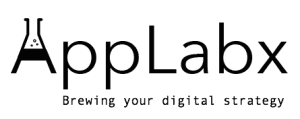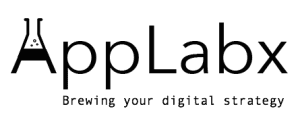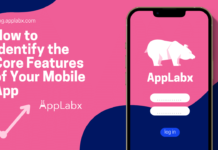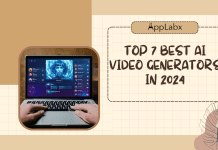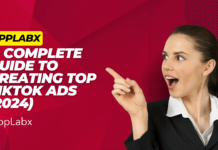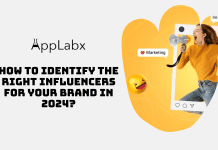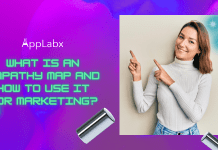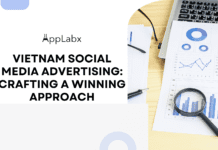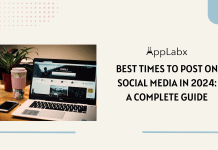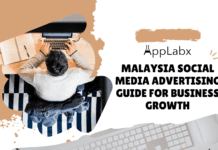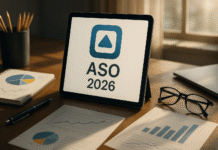Key Takeaways
- Selecting social media platforms based on audience fit and business goals drives higher engagement and ROI in 2025.
- Embracing trends like short-form video and social commerce is essential for staying competitive.
- Focusing on data-driven decisions and platform-specific strategies maximizes growth and brand visibility.
In the fast-paced digital era, social media continues to be one of the most powerful tools for businesses to connect with their audiences, build brand awareness, and drive revenue. However, as we step into 2025, the social media landscape is more dynamic, fragmented, and competitive than ever before. With new platforms emerging, algorithms constantly evolving, and user behavior rapidly shifting, businesses face a critical question: Which social media channels are best for my business in 2025?

The truth is, the days of a one-size-fits-all approach to social media marketing are long gone. Choosing the right platform is no longer just about following trends or jumping on the latest viral app. It is about understanding where your target audience spends their time, how they consume content, and what type of engagement drives meaningful results for your brand. Whether you are a small startup, a local business, or a large enterprise, making the right decision about which social platforms to prioritize can directly impact your marketing ROI, customer acquisition, and long-term brand loyalty.
In 2025, the social media ecosystem includes a wide variety of platforms, each offering unique features, audiences, and marketing opportunities. Traditional giants like Facebook, Instagram, LinkedIn, and YouTube continue to evolve, introducing advanced AI-driven algorithms, new content formats, and enhanced advertising capabilities. Meanwhile, newer platforms like TikTok, Threads, and emerging AI-powered networks are disrupting how brands engage with younger, trend-driven audiences. The rise of social commerce, short-form video dominance, and authentic, community-driven content has reshaped how businesses must approach their social media strategies.
Additionally, factors such as data privacy regulations, algorithm transparency, and the increasing role of artificial intelligence in content recommendations are influencing both users and marketers. Consumers in 2025 demand authenticity, instant value, and hyper-personalized experiences. This shift means that brands must go beyond simply posting content—they must curate platform-specific strategies that align with audience preferences and behavioral trends.
Selecting the wrong platform can result in wasted resources, low engagement, and missed opportunities. On the other hand, choosing the right channels can help businesses amplify their message, foster loyal communities, drive website traffic, and convert followers into paying customers. But how do you make that decision when each platform serves a different purpose and caters to different demographics?
This comprehensive guide is designed to help you navigate the complex world of social media in 2025. It breaks down the strengths and weaknesses of major social platforms, identifies the key factors you must consider before choosing a channel, and highlights the latest trends shaping social media marketing this year. Whether your goal is to boost brand awareness, drive lead generation, foster community engagement, or sell directly through social commerce, this guide will equip you with the knowledge to make informed decisions.
By the end of this article, you will have a clear understanding of:
- Which social media platforms align best with your business goals and target audience.
- How each platform functions in 2025, including its audience demographics, content preferences, and marketing strengths.
- The emerging trends, technologies, and strategies that businesses must adopt to remain competitive in the social media space.
In a world where digital presence can make or break a business, the ability to strategically select and utilize the right social media channels has never been more crucial. Let’s dive into the ultimate guide to choosing the best social media platforms for your business in 2025.
But, before we venture further, we like to share who we are and what we do.
About AppLabx
From developing a solid marketing plan to creating compelling content, optimizing for search engines, leveraging social media, and utilizing paid advertising, AppLabx offers a comprehensive suite of digital marketing services designed to drive growth and profitability for your business.
AppLabx is well known for helping companies and startups create world-class Social Media strategies.
At AppLabx, we understand that no two businesses are alike. That’s why we take a personalized approach to every project, working closely with our clients to understand their unique needs and goals, and developing customized strategies to help them achieve success.
If you need a digital consultation, then send in an inquiry here.
The Social Media Platform Guide: Which Channels Are Best for Your Business in 2025?
- Why Choosing the Right Social Media Platform Matters
- Factors to Consider When Selecting a Social Media Platform
- Top Social Media Platforms in 2025 (with Pros and Cons)
- How to Match Platforms to Your Business Goals
- Comparison Table: Social Media Platforms for Business in 2025
- Mistakes to Avoid When Choosing Social Platforms
1. Why Choosing the Right Social Media Platform Matters
Selecting the correct social media platform is not just a marketing decision—it is a fundamental business strategy that directly impacts brand visibility, customer engagement, lead generation, and revenue growth. In 2025, with the digital landscape becoming increasingly competitive and diversified, understanding the importance of platform selection is crucial for any business aiming to scale effectively.
Impact on Audience Targeting and Reach
- Reaching the Right Demographic:
- Each platform serves different age groups, interests, and geographic locations.
- Example: LinkedIn is ideal for professionals and B2B sectors, while TikTok dominates among Gen Z and younger Millennials.
- Tailoring Content to Audience Behavior:
- Users engage differently based on the platform—visual content thrives on Instagram, educational long-form video excels on YouTube, and thought leadership performs best on LinkedIn.
- Platform-Specific Community Building:
- Businesses that select platforms aligned with their audience can foster loyal communities.
- Example: A fitness brand might use Instagram and TikTok for workout videos, while a financial consultant uses LinkedIn and Twitter for sharing insights.
Maximizing Return on Investment (ROI)
- Cost-Effective Advertising:
- Platforms with precise targeting features yield better ad performance.
- Example: Meta Ads (Facebook + Instagram) allow granular audience targeting based on interests, behaviors, and demographics.
- Organic vs. Paid Balance:
- Some platforms, like TikTok, offer higher organic reach, reducing paid marketing costs.
- Others, like Facebook, require a more paid-driven strategy due to algorithm limitations.
- Conversion Efficiency:
- Social commerce integration on Instagram, Facebook, and TikTok allows users to purchase without leaving the app, boosting conversion rates.
Influence of Platform Algorithms on Visibility
- Algorithm Bias:
- Platforms prioritize different types of content.
- Example: Instagram’s Reels are heavily pushed in feeds, while static posts have lower visibility.
- Content Lifecycle:
- Content on Twitter/X has a short lifespan (~18 minutes), requiring frequent posting.
- YouTube videos can gain views for months or years due to search-driven algorithms.
- Engagement Signals:
- Platforms reward engagement types differently: shares, comments, saves, watch time, and click-throughs all influence content reach.
Platform-Content Compatibility
| Platform | Best Content Types | Worst Content Types |
|---|---|---|
| Community posts, groups, videos | Static text-only updates | |
| Reels, stories, high-quality images | Text-heavy content | |
| TikTok | Short-form video, trends, challenges | Long-form written content |
| Professional articles, insights | Entertainment memes | |
| YouTube | Tutorials, reviews, vlogs | Static images |
| Infographics, DIY, ecommerce pins | Videos longer than 5 minutes | |
| Threads | Short text, real-time conversations | Highly visual or polished media |
| Snapchat | Ephemeral content, AR, stories | Long-form video or articles |
Mismatch Consequences for Businesses
- Reduced Engagement:
- Posting long educational videos on TikTok results in low retention.
- A product-reliant business using Threads might struggle due to its text-first focus.
- Wasted Ad Spend:
- Running LinkedIn ads for teenage-focused fashion brands results in poor returns.
- Brand Misalignment:
- A serious law firm using Snapchat may damage its professional image.
Real-World Examples of Success and Failure
| Business Type | Successful Platform Match | Unsuccessful Match |
|---|---|---|
| Beauty Brand | Instagram, TikTok (visual, trend-driven content) | LinkedIn (wrong audience) |
| B2B SaaS | LinkedIn (lead generation, thought leadership) | TikTok (audience misalignment) |
| Local Restaurant | Facebook (community groups, location-based targeting) | Pinterest (low relevance for dining) |
| DIY Home Decor Shop | Pinterest (visual, project-based discovery) | Twitter (low visual engagement) |
| Entertainment Vlogger | YouTube, TikTok (video-first audiences) | LinkedIn (irrelevant audience) |
Platform Influence on Marketing Goals
| Goal | Recommended Platforms |
|---|---|
| Brand Awareness | TikTok, Instagram, YouTube |
| Lead Generation (B2B) | LinkedIn, Facebook |
| Lead Generation (B2C) | Instagram, TikTok, Facebook |
| Direct Sales / Social Commerce | Instagram, Facebook, TikTok |
| Customer Support | Twitter/X, Facebook Messenger, WhatsApp |
| Community Building | Facebook Groups, Discord, Threads |
| Thought Leadership | LinkedIn, X (Twitter), YouTube |
| Product Discovery | Pinterest, TikTok, Instagram |
The Cost of Poor Platform Selection
- Lost Opportunities:
- Missing audiences where competitors are thriving.
- Decreased ROI:
- Higher costs for lower engagement and conversions.
- Brand Dilution:
- Posting content that does not resonate leads to negative brand perception.
- Time Waste:
- Spreading efforts thin over too many irrelevant platforms reduces focus and impact.
Conclusion: Strategic Platform Selection Drives Success
Choosing the right social media platform in 2025 is not optional—it is essential. Businesses that align their platform choices with audience behaviors, content preferences, and marketing goals will outperform competitors, achieve higher engagement, and see greater returns on both organic and paid efforts. In the sections ahead, this guide will break down each major platform, its strengths, weaknesses, and ideal use cases to help businesses make the most informed decision possible.
2. Factors to Consider When Selecting a Social Media Platform
Choosing the right social media platform is a strategic decision that goes beyond popularity or trends. It requires a deep understanding of your target audience, business goals, content strategy, and platform dynamics. In 2025, with the rapid evolution of digital marketing, businesses must evaluate several critical factors before committing time and resources to any platform.
Audience Demographics and Behavior
- Age Distribution:
- TikTok: Dominated by Gen Z and younger Millennials (ages 13–35).
- LinkedIn: Attracts professionals aged 25–55+.
- Facebook: Popular among 25–65+, especially older demographics.
- Instagram: Strong presence among ages 18–44.
- Gender Breakdown:
- Pinterest: 70%+ female users, ideal for fashion, home decor, and DIY.
- LinkedIn & X (Twitter): More balanced gender distribution.
- Geographical Location:
- Facebook & WhatsApp: Highly popular in Southeast Asia, Africa, and Latin America.
- LinkedIn & X: Strong presence in North America and Europe.
- Content Consumption Habits:
- TikTok & Instagram: Short-form video, fast consumption, trend-driven.
- YouTube: Long-form videos, tutorials, and educational content.
- Threads & X: Quick updates, news, real-time conversations.
| Platform | Dominant Age Group | Primary Gender | Content Behavior |
|---|---|---|---|
| TikTok | 13-35 | Balanced | Short-form video, trends |
| 18-44 | Balanced | Reels, Stories, shopping | |
| 25-65+ | Balanced | Groups, videos, ads | |
| 25-55+ | Balanced | Articles, networking | |
| YouTube | All Ages | Balanced | Long/short-form video |
| 18-49 | 70% Female | Pins, DIY, ecommerce | |
| X (Twitter) | 25-49 | Balanced | News, updates, conversations |
| Threads | 18-45 | Balanced | Text-based community |
Industry Relevance
- B2B Businesses:
- Best Platforms: LinkedIn, X (Twitter), YouTube
- Example: SaaS companies sharing case studies, webinars, and whitepapers on LinkedIn.
- B2C Brands:
- Best Platforms: Instagram, TikTok, Pinterest, Facebook
- Example: Fashion brands using Instagram Reels and TikTok trends to showcase new collections.
- Ecommerce and Retail:
- Best Platforms: Instagram (Shop), TikTok Shop, Pinterest (Product Pins), Facebook Marketplace
- Local and Small Businesses:
- Best Platforms: Facebook Groups, Instagram, Google Business Profile linked with YouTube Shorts
- Niche and Creative Industries:
- Best Platforms: Pinterest, TikTok, YouTube, Instagram
| Industry Type | Recommended Platforms |
|---|---|
| B2B | LinkedIn, X (Twitter), YouTube |
| B2C | TikTok, Instagram, Facebook, Pinterest |
| Ecommerce | TikTok Shop, Instagram Shop, Facebook Marketplace, Pinterest |
| Local Business | Facebook Groups, Instagram, Google Business, WhatsApp |
| Creative/Niche | Pinterest, TikTok, YouTube, Instagram |
Content Format Compatibility
- Video-First Platforms:
- TikTok, Instagram Reels, YouTube, Snapchat
- Best for product demos, behind-the-scenes, influencer collaborations.
- Image-Driven Platforms:
- Instagram (feed and stories), Pinterest
- Best for lifestyle products, fashion, travel, and decor.
- Text and Thought Leadership:
- LinkedIn, Threads, X (Twitter)
- Ideal for professional insights, news, commentary, and industry updates.
- Ephemeral Content:
- Snapchat, Instagram Stories, Facebook Stories
- Effective for limited-time offers, behind-the-scenes content, and flash promotions.
| Platform | Primary Content Types | Secondary Content Types |
|---|---|---|
| TikTok | Short-form video | Livestreams |
| Photos, Reels, Stories | Shopping posts, Live | |
| Text + image posts, videos, Stories | Groups, Marketplace | |
| Articles, videos, carousels | Polls, thought leadership posts | |
| YouTube | Long-form and short-form video | Livestreams |
| Images, infographics, Pins | Short videos (Idea Pins) | |
| X (Twitter) | Text, polls, short videos | Threads, images |
| Threads | Text-based microblogging | Images, short videos |
Advertising Capabilities
- Ad Targeting Sophistication:
- Meta (Facebook + Instagram): Best for detailed demographic, behavioral, and lookalike targeting.
- LinkedIn: Superior for job title, company size, industry, and seniority targeting (B2B).
- TikTok Ads: Interest-based with growing AI-driven targeting models.
- Ad Formats:
- TikTok & Instagram: Full-screen, immersive video ads.
- Facebook: Carousel, video, image, lead form ads.
- LinkedIn: Sponsored content, lead gen forms, InMail.
- Pinterest: Shopping ads, idea pin ads, promoted pins.
- Cost Efficiency:
- Meta: Affordable CPMs for B2C and local businesses.
- LinkedIn: Higher CPM, but strong B2B ROI.
- TikTok: Increasing costs but high engagement for viral campaigns.
| Platform | Targeting Strength | Ad Formats | Cost Efficiency |
|---|---|---|---|
| Meta | Very High | Carousel, video, lead ads, Stories | High for B2C, Local |
| Very High (B2B) | Sponsored posts, InMail, carousel | Medium-High (Premium) | |
| TikTok | Growing | Video ads, branded effects, Spark Ads | High engagement, rising |
| Medium | Promoted Pins, Shopping, Idea Pins | High | |
| YouTube | High | Skippable ads, bumper ads, display ads | Medium-High |
| Snapchat | Medium | Story ads, filters, AR lenses | Moderate |
Platform Growth Trends for 2025
- Emerging Platforms:
- Threads: Rapid growth for community-led conversations.
- Lemon8: Rising for lifestyle, aesthetics, and influencer content.
- BeReal: Focus on authenticity, but niche adoption.
- Declining Usage:
- X (Twitter): Facing slow growth due to competition and platform changes.
- Snapchat: Stable but not expanding significantly beyond Gen Z.
- Trending Formats:
- Short-form video continues to dominate (TikTok, Instagram Reels, YouTube Shorts).
- Social commerce integrates deeper with in-app checkouts on TikTok Shop and Instagram Shop.
| Platform | 2025 Growth Trend | Adoption Level | Trend Focus |
|---|---|---|---|
| TikTok | Very High | Mainstream | Short-form video, shopping |
| High | Mainstream | Reels, visual commerce | |
| YouTube | High | Mainstream | Shorts, educational content |
| Moderate | Professional B2B | Thought leadership, hiring | |
| Moderate | Niche to mainstream | Visual discovery, ecommerce | |
| Stable | Mature audiences | Groups, community | |
| X (Twitter) | Declining | Niche/news-driven | Real-time conversation |
| Threads | Growing rapidly | Early adopters | Text-based communities |
| Snapchat | Stable | Gen Z focused | Ephemeral, AR |
Conclusion: Evaluate Before You Engage
Choosing the right social media platform in 2025 depends on a combination of audience demographics, industry alignment, content format compatibility, advertising potential, and growth trajectory. A strategic approach to platform selection enables businesses to maximize ROI, improve engagement, and reach the right customers effectively. The next sections of this guide will break down each platform’s strengths, weaknesses, and suitability for different business goals to help guide your decision-making process.
3. Top Social Media Platforms in 2025 (with Pros and Cons)
In 2025, the social media ecosystem is more dynamic than ever. Each platform offers unique advantages and limitations, and understanding these differences is crucial for businesses to create effective marketing strategies. This section provides an in-depth look at the leading social media platforms, their pros and cons, ideal use cases, and growth trends.
Facebook (Meta)
Pros
- Massive user base spanning ages 25–65+.
- Powerful advertising platform with detailed targeting options.
- Excellent for community building via Facebook Groups.
- Strong local marketing through Marketplace and Events.
- Supports a wide range of content formats: video, stories, text, and live streams.
Cons
- Declining popularity among Gen Z and younger audiences.
- Lower organic reach due to algorithm favoring paid content.
- Increasing competition for ad placements drives up costs.
Best For
- Local businesses, community-driven brands, ecommerce, and service-based industries.
Instagram (Meta)
Pros
- Visual-first platform ideal for lifestyle, fashion, beauty, travel, and food brands.
- High engagement through Reels, Stories, and Shopping.
- Instagram Shop enables direct product sales within the app.
- Strong influencer marketing ecosystem.
- Integrates seamlessly with Facebook Ads Manager for targeted campaigns.
Cons
- Requires visually appealing and consistent content to perform well.
- Algorithm prioritizes Reels over static posts, requiring continuous video creation.
- Lower reach for purely text-based or long-form content.
Best For
- Ecommerce, fashion, beauty, food, lifestyle, fitness, and travel industries.
TikTok
Pros
- Highest organic reach among all platforms in 2025.
- Short-form video dominates, offering viral potential for creative content.
- Highly engaged Gen Z and Millennial audience (ages 13–40).
- TikTok Shop enables seamless in-app shopping experiences.
- Effective for influencer collaborations and trend-based marketing.
Cons
- Content lifecycle is fast; trends change quickly.
- Challenging for businesses lacking video creation capabilities.
- Older demographics are still underrepresented.
Best For
- Ecommerce, beauty, fashion, tech gadgets, entertainment, food, and DTC brands.
Pros
- Best platform for B2B marketing and professional networking.
- High-quality lead generation through targeted ads based on job title, company size, and industry.
- Excellent for establishing thought leadership via articles, posts, and videos.
- Higher trust factor among users compared to other platforms.
- Growing content consumption beyond job searching.
Cons
- Higher cost-per-click (CPC) and cost-per-impression (CPM) compared to B2C platforms.
- Less effective for consumer brands or entertainment-focused businesses.
- Slower content virality compared to TikTok or Instagram.
Best For
- B2B SaaS, consulting, finance, legal, education, and HR-related services.
YouTube
Pros
- Largest video platform globally, functioning as both a search engine and a social network.
- Evergreen content lifecycle; videos continue generating views for years.
- Highly effective for long-form content, tutorials, vlogs, product reviews, and educational materials.
- YouTube Shorts offers opportunities in the short-form video space.
- Strong SEO capabilities as part of Google’s ecosystem.
Cons
- High production value expected for long-form videos.
- Slower subscriber growth compared to fast-paced platforms like TikTok.
- Requires consistent uploads to maintain growth momentum.
Best For
- Education, entertainment, software tutorials, product demonstrations, travel, and influencer content.
Pros
- Visual discovery platform with a strong focus on shopping intent.
- High conversion rates for ecommerce, DIY, fashion, home decor, and food industries.
- Evergreen content—Pins continue driving traffic long after posting.
- Strong SEO-like algorithm based on keyword searches.
- Affordable ad costs with high purchase intent.
Cons
- Lower engagement for industries outside of visual or lifestyle categories.
- Not ideal for real-time engagement or conversational content.
- Limited appeal for B2B sectors.
Best For
- Ecommerce, DIY, home decor, fashion, beauty, weddings, crafts, and recipe-focused businesses.
X (Twitter)
Pros
- Real-time communication and trend tracking.
- Effective for news dissemination, public relations, and quick customer support.
- Great for thought leadership and professional commentary.
- Highly active communities in tech, finance, sports, and media.
Cons
- Declining growth and engagement in some demographics.
- Character limits restrict detailed storytelling.
- Algorithm changes and platform instability can impact reach.
- Not effective for heavy visual or product-driven content.
Best For
- Media companies, journalists, tech startups, financial services, and public figures.
Threads (Meta)
Pros
- Text-based microblogging with growing user base in 2025.
- Ideal for community-driven conversations without the negativity associated with other platforms.
- Integrates with Instagram for cross-audience engagement.
- Rising adoption among professionals, creators, and niche communities.
Cons
- Limited visual content capabilities compared to Instagram or TikTok.
- Still developing features like advertising and analytics.
- Smaller audience base compared to mature platforms.
Best For
- Brands focused on thought leadership, community building, behind-the-scenes updates, and casual conversations.
Snapchat
Pros
- Popular among Gen Z and younger Millennials.
- Strong for ephemeral content, AR lenses, and direct engagement.
- High engagement for location-based promotions and youth-focused campaigns.
- Innovative AR and immersive brand experiences.
Cons
- Short content lifespan—Snaps disappear within 24 hours.
- Less effective for long-term brand storytelling.
- Limited reach outside the youth demographic.
Best For
- Youth-driven brands, fashion, entertainment, and location-based promotions.
Emerging Platforms in 2025
| Platform | Description | Best For | Challenges |
|---|---|---|---|
| Threads | Text-based conversation app by Meta | Community, thought leadership | Smaller user base, limited ad tools |
| Lemon8 | Aesthetic-first lifestyle and wellness content | Influencers, lifestyle brands | Niche, early-stage adoption |
| BeReal | Authentic, real-time photo sharing | Gen Z, transparency-focused brands | Not ad-friendly, limited engagement |
| Mastodon | Decentralized, open-source microblogging | Privacy-focused users, niche communities | Smaller user base, fragmented ecosystem |
Comprehensive Comparison Chart
| Platform | Best For | Audience | Content Type | Ad Strength | Growth Trend 2025 |
|---|---|---|---|---|---|
| Community, local, ecommerce | 25-65+ | Video, images, groups | High | Stable | |
| Visual brands, ecommerce | 18-44 | Reels, images, stories | High | Growing | |
| TikTok | Trend-driven, ecommerce | 13-40 | Short-form video | High | Explosive growth |
| B2B, professionals | 25-55+ | Articles, video | High | Growing | |
| YouTube | Education, entertainment | All ages | Long & short video | High | Growing |
| DIY, ecommerce, lifestyle | 18-49 (70% F) | Pins, images | Medium | Stable-Growing | |
| X (Twitter) | News, PR, thought leadership | 25-49 | Text, polls, updates | Medium | Declining |
| Threads | Community, thought leadership | 18-45 | Text, microblogging | Low (developing) | Growing rapidly |
| Snapchat | Youth-focused, AR, ephemeral content | 13-30 | Snaps, stories, AR | Medium | Niche stable |
| Lemon8 | Aesthetics, lifestyle influencers | 18-34 | Photos, guides | Low (new) | Emerging |
Conclusion: Platform Choice Dictates Success in 2025
Selecting the right social media platform depends on your business model, audience, and content strategy. Brands that align their social media presence with where their audience is most engaged—while adapting to platform strengths and weaknesses—will enjoy greater brand visibility, higher engagement, and better ROI. The next sections of this guide will provide detailed insights into aligning these platforms with your specific marketing goals.
4. How to Match Platforms to Your Business Goals
Selecting the right social media platform starts with defining clear business goals. Each platform serves different purposes, excels in specific content types, and reaches varying audiences. To maximize return on investment (ROI) and accelerate growth, businesses must align their platform choices with their primary objectives—whether it’s brand awareness, lead generation, direct sales, customer service, or community building.
Build Brand Awareness
Best Platforms for Brand Visibility
- TikTok:
- High organic reach with viral trends.
- Perfect for storytelling, challenges, and behind-the-scenes content.
- Instagram:
- Visual discovery through Reels, Stories, and Explore page.
- Effective for lifestyle brands, fashion, beauty, and food.
- YouTube:
- Long-form and short-form video builds trust and authority.
- Tutorials, reviews, vlogs, and educational content drive massive exposure.
- Facebook:
- Community-driven visibility through Groups and Events.
- Great for local businesses and wide demographic reach.
Tactics for Brand Awareness
- Invest in Reels, TikTok trends, and YouTube Shorts for viral potential.
- Use influencer partnerships to amplify reach.
- Focus on storytelling rather than direct selling.
| Platform | Strength for Awareness | Recommended Content |
|---|---|---|
| TikTok | Very High | Trends, short videos |
| High | Reels, Stories, IG Live | |
| YouTube | High | Tutorials, vlogs, Shorts |
| Medium | Groups, Events, videos |
Lead Generation and Customer Acquisition
B2B Lead Generation
- LinkedIn:
- Top platform for B2B lead generation.
- Target by job title, company size, industry, and seniority.
- YouTube:
- Educational content attracts leads through how-to videos and webinars.
- X (Twitter):
- Engage in industry conversations and thought leadership.
B2C Lead Generation
- Instagram:
- Lead forms in Stories and bio links.
- High-conversion Instagram Shop for product-based brands.
- TikTok:
- TikTok ads drive direct traffic to lead forms or product pages.
- Facebook:
- Lead generation ads, Messenger bots, and local ads.
| Business Type | Recommended Platforms |
|---|---|
| B2B | LinkedIn, YouTube, X (Twitter) |
| B2C | Instagram, TikTok, Facebook |
Lead Generation Tactics
- Use lead-gen forms on LinkedIn, Facebook, and Instagram Stories.
- Leverage TikTok Spark Ads to amplify content and drive leads.
- Offer downloadable guides, free trials, or webinars via YouTube and LinkedIn.
Drive Direct Sales (Social Commerce)
Top Platforms for Sales
- Instagram:
- Instagram Shop with in-app checkout.
- Product tags in posts, Stories, and Reels.
- TikTok:
- TikTok Shop enables frictionless in-app purchases.
- Livestream shopping drives impulse buys.
- Pinterest:
- Product Pins link directly to ecommerce stores.
- High purchase intent from users searching for ideas.
- Facebook:
- Facebook Marketplace and Shop for small businesses and local sellers.
| Platform | Strength for Sales | Best Features |
|---|---|---|
| Very High | Instagram Shop, Product Tags | |
| TikTok | Very High | TikTok Shop, Live Shopping |
| High | Product Pins, Visual Search | |
| High | Facebook Shop, Marketplace |
Social Commerce Tactics
- Use livestream shopping on TikTok to showcase products in real-time.
- Optimize product listings on Instagram and Pinterest with rich visuals.
- Use influencer collaborations to boost trust and conversions.
Customer Service and Support
Best Platforms for Support
- Facebook:
- Messenger bots and comment management for quick responses.
- X (Twitter):
- Excellent for real-time customer service and issue resolution.
- WhatsApp Business:
- Direct messaging for personalized customer support.
- Instagram:
- DMs and Story question stickers for instant interactions.
| Platform | Response Speed | Support Tools |
|---|---|---|
| High | Messenger bots, comments, reviews | |
| X (Twitter) | High | Public responses, DMs, threads |
| Very High | Private chats, auto-responses | |
| Medium-High | Direct messages, Story Q&A |
Customer Service Tactics
- Implement AI-driven bots on Messenger and WhatsApp for 24/7 support.
- Monitor Twitter for brand mentions and resolve issues quickly.
- Use Stories on Instagram for FAQs and quick answers.
Foster Community and Loyalty
Top Platforms for Community Building
- Facebook Groups:
- Exclusive groups for customers, fans, and interest communities.
- Threads:
- Text-based micro-communities with growing user engagement.
- Discord:
- Highly interactive server-based communities, especially for gaming, tech, and creator audiences.
- Instagram:
- Polls, Q&A, and interactive stickers foster micro-community engagement.
| Platform | Community Strength | Key Features |
|---|---|---|
| Very High | Groups, Events, Pages | |
| Threads | High | Text-based threads, conversations |
| Discord | Very High | Servers, voice, chat, channels |
| Medium-High | Polls, DMs, Story engagement |
Community-Building Tactics
- Create Facebook Groups for exclusive member perks and discussions.
- Host AMAs (Ask Me Anything) or text-based discussions on Threads.
- Use Discord for real-time chat, webinars, and loyalty programs.
- Engage audiences via polls, quizzes, and feedback stickers on Instagram Stories.
Content Marketing and Thought Leadership
Best Platforms for Thought Leadership
- LinkedIn:
- Professional articles, carousels, and thought leadership posts.
- YouTube:
- In-depth tutorials, explainers, and webinar recordings.
- X (Twitter):
- Share quick insights, commentary, and participate in industry conversations.
- Threads:
- Post bite-sized thoughts, updates, and engage in discussions.
| Platform | Content Type | Best Use Cases |
|---|---|---|
| Articles, posts, carousels | B2B insights, professional networking | |
| YouTube | Tutorials, webinars, reviews | Educational and long-form content |
| X (Twitter) | Text, threads, polls | Thought leadership, news, commentary |
| Threads | Short text, conversations | Community-driven thought sharing |
Thought Leadership Tactics
- Publish weekly LinkedIn articles on industry insights.
- Host YouTube webinars and break them into Shorts for wider reach.
- Engage in trending topics and industry discussions on Twitter/X and Threads.
Goal-to-Platform Matching Matrix
| Goal | Best Platforms |
|---|---|
| Brand Awareness | TikTok, Instagram, YouTube, Facebook |
| B2B Lead Generation | LinkedIn, YouTube, X (Twitter) |
| B2C Lead Generation | Instagram, TikTok, Facebook |
| Direct Sales | TikTok Shop, Instagram Shop, Pinterest, Facebook Marketplace |
| Customer Support | Facebook, X (Twitter), WhatsApp, Instagram |
| Community Building | Facebook Groups, Threads, Discord, Instagram |
| Thought Leadership | LinkedIn, YouTube, X (Twitter), Threads |
Conclusion: Platform-Goal Alignment Maximizes Results
The key to a successful social media strategy in 2025 is aligning your chosen platforms with your specific business goals. Whether it’s driving brand awareness through TikTok, generating B2B leads on LinkedIn, or creating a loyal community on Facebook Groups, matching your efforts to the strengths of each platform ensures maximum ROI, customer satisfaction, and sustained growth. In the next section, this guide will explore the major trends shaping platform choices in 2025 to help future-proof your social media strategy.
5. Comparison Table: Social Media Platforms for Business in 2025
Choosing the right social media platform for business in 2025 requires evaluating multiple factors, including audience demographics, content format compatibility, advertising capabilities, engagement levels, and growth trends. This comprehensive comparison provides a clear breakdown of the strengths, weaknesses, and best use cases for each major platform.
Comprehensive Social Media Platform Comparison Matrix (2025)
| Platform | Audience Demographics | Content Format | Strengths | Weaknesses | Best For |
|---|---|---|---|---|---|
| 25–65+, wide global reach | Video, Stories, Groups, Text | Community building, local marketing, versatile ads | Declining younger users, pay-to-play model | Local businesses, ecommerce, community-driven brands | |
| 18–44, Millennials & Gen Z | Visuals, Reels, Stories, Shopping | High engagement, ecommerce-ready, influencer-friendly | Requires constant visual content, competitive | Fashion, beauty, lifestyle, food, retail | |
| TikTok | 13–40, Gen Z & Millennials | Short-form video, livestream | Viral growth potential, organic reach, TikTok Shop | Fast content turnover, requires video skills | DTC brands, ecommerce, entertainment, fashion |
| 25–55+, professionals | Articles, Carousels, Video, Polls | B2B lead generation, thought leadership, job targeting | High CPM, limited for B2C | B2B, SaaS, finance, consulting, education | |
| YouTube | All ages, global | Long/short videos, livestreams | Evergreen SEO-driven content, high trust, YouTube Shorts | High production demands, slower growth | Education, tutorials, product reviews, influencers |
| 18–49, 70% female | Pins, Idea Pins, Shopping | High purchase intent, evergreen traffic, visual discovery | Niche audience, limited for real-time engagement | DIY, fashion, decor, recipes, ecommerce | |
| X (Twitter) | 25–49, professionals & media | Text, Threads, Polls, Videos | Real-time updates, PR, thought leadership | Declining growth, short content lifespan | Media, tech, finance, public figures |
| Threads | 18–45, early adopters | Text, Microblogging, Images | Rising for community engagement, less toxicity | Smaller user base, early-stage ad tools | Community-led brands, startups, thought leaders |
| Snapchat | 13–30, Gen Z | Snaps, Stories, AR lenses | High Gen Z engagement, AR marketing, ephemeral content | Limited reach beyond youth, low long-term content | Fashion, youth-focused brands, entertainment |
Platform Performance and Growth Chart (2025)
| Platform | Growth Trend 2025 | Ad Strength | Organic Reach | Engagement Level | Commerce Integration |
|---|---|---|---|---|---|
| TikTok | Explosive Growth | High | Very High | Very High | Excellent (TikTok Shop) |
| High Growth | Very High | High | High | Excellent (IG Shop) | |
| Stable | Very High | Medium | Medium | Strong (Marketplace, Shop) | |
| Steady Growth | High (B2B) | Medium | High | Low | |
| YouTube | High Growth | High | Medium | High | Moderate (Shopping Tags) |
| Moderate Growth | Medium | High | High | Excellent (Product Pins) | |
| X (Twitter) | Declining | Medium | Low | Medium | Low |
| Threads | Rising Rapidly | Low (Emerging) | High | Medium-High | Low |
| Snapchat | Stable (Niche) | Medium | Medium | High (Gen Z) | Low |
Ad Capability Comparison Table
| Platform | Targeting Sophistication | Ad Formats | Cost Efficiency | Conversion Potential |
|---|---|---|---|---|
| Very High | Carousel, Stories, Lead Ads, Video | High for local, medium for global | High | |
| Very High | Reels Ads, Stories Ads, Product Tags | Medium | Very High | |
| TikTok | High and improving | Spark Ads, In-Feed, Branded Effects | Increasing | Very High |
| Very High (B2B) | Sponsored Content, Message Ads, Lead Gen | High CPM | High for B2B | |
| YouTube | High | Skippable/Non-skippable Video, Display Ads | Medium | High |
| Medium | Promoted Pins, Shopping Ads | Low to Medium | High | |
| X (Twitter) | Medium | Promoted Tweets, Video, Trends | Medium | Moderate |
| Threads | Low (Emerging) | (Expected in future) | Low (currently) | Unknown |
| Snapchat | Medium | AR Lenses, Story Ads, Filters | Low to Medium | Moderate (Gen Z focused) |
Content Format Fit Matrix (2025)
| Content Format | TikTok | YouTube | X (Twitter) | Threads | Snapchat | ||||
|---|---|---|---|---|---|---|---|---|---|
| Short-Form Video | Excellent | Excellent | Good | Poor | Excellent (Shorts) | Fair | Poor | Poor | Excellent |
| Long-Form Video | Poor | Fair | Good | Fair | Excellent | Poor | Poor | Poor | Poor |
| Photos/Images | Poor | Excellent | Good | Good | Poor | Excellent | Fair | Good | Good |
| Livestream | Excellent | Excellent | Good | Fair | Excellent | Poor | Poor | Poor | Good |
| Text-Based Posts | Poor | Poor | Good | Excellent | Poor | Poor | Excellent | Excellent | Poor |
| Stories/Ephemeral | Fair | Excellent | Excellent | Poor | Poor | Poor | Poor | Poor | Excellent |
| Shopping/Ecommerce | Excellent | Excellent | Excellent | Low | Moderate | Excellent | Low | Low | Low |
Platform Suitability by Business Objective
| Business Objective | Recommended Platforms |
|---|---|
| Brand Awareness | TikTok, Instagram, YouTube, Facebook |
| Community Building | Facebook Groups, Discord, Threads, Instagram |
| Lead Generation (B2B) | LinkedIn, YouTube, X (Twitter) |
| Lead Generation (B2C) | Instagram, TikTok, Facebook |
| Direct Sales | TikTok Shop, Instagram Shop, Pinterest, Facebook |
| Customer Support | Facebook, X (Twitter), WhatsApp, Instagram |
| Thought Leadership | LinkedIn, YouTube, Threads, X (Twitter) |
| Event Marketing | Facebook, LinkedIn, Instagram |
| Product Demonstration | TikTok, YouTube, Instagram Reels |
| Local Business Growth | Facebook Marketplace, Instagram, WhatsApp |
Visual Summary Chart: Platform Strength Radar (2025)
| Platform | Audience Reach | Ad Targeting | Content Flexibility | Engagement Level | Commerce Tools |
|---|---|---|---|---|---|
| TikTok | 9/10 | 8/10 | 9/10 | 10/10 | 9/10 |
| 9/10 | 9/10 | 9/10 | 9/10 | 9/10 | |
| 8/10 | 10/10 | 8/10 | 7/10 | 9/10 | |
| 7/10 | 10/10 (B2B) | 7/10 | 8/10 | 5/10 | |
| YouTube | 9/10 | 8/10 | 10/10 | 9/10 | 7/10 |
| 7/10 | 7/10 | 7/10 | 8/10 | 9/10 | |
| X (Twitter) | 6/10 | 7/10 | 6/10 | 7/10 | 4/10 |
| Threads | 7/10 | 5/10 (Emerging) | 6/10 | 8/10 | 4/10 |
| Snapchat | 6/10 | 7/10 | 6/10 | 8/10 | 4/10 |
Conclusion: The Ultimate Platform Decision Guide for 2025
This comparison clearly illustrates that there is no universal best platform for every business. The optimal platform depends entirely on your target audience, business objectives, and content capabilities.
- For brand visibility and viral marketing, TikTok and Instagram lead.
- For B2B lead generation and thought leadership, LinkedIn and YouTube dominate.
- If your focus is on social commerce, platforms like TikTok Shop, Instagram Shop, Pinterest, and Facebook Marketplace are unmatched.
- For community-building, Facebook Groups, Discord, and Threads offer the best engagement.
Brands that leverage this data-driven approach to match platforms with goals will maximize ROI, build stronger connections, and future-proof their social media strategies for 2025 and beyond.
6. Mistakes to Avoid When Choosing Social Platforms
Selecting the wrong social media platforms can lead to wasted resources, low engagement, poor ROI, and missed business opportunities. In 2025, the digital landscape is highly competitive and rapidly evolving, making it critical for businesses to avoid common pitfalls when building their social media strategy.
Focusing Only on Platform Popularity, Not Audience Fit
Key Mistake
- Choosing a platform solely because it’s trending rather than considering if the target audience actively uses it.
Examples
- A B2B consulting firm prioritizing TikTok over LinkedIn due to TikTok’s viral appeal but failing to generate quality leads.
- A local service business ignoring Facebook because it’s “old” but missing out on the platform’s strong local targeting features.
Why It’s Harmful
- Mismatch between content and audience behavior.
- Lower engagement rates and wasted ad spend.
| Mistake | Impact | Correct Approach |
|---|---|---|
| Choosing by popularity alone | Poor engagement, low ROI | Align platform with audience demographics and intent |
Ignoring the Content Format Demands
Key Mistake
- Selecting platforms without having the resources or skills to create the preferred content formats.
Examples
- Brands choosing TikTok but lacking video production capabilities.
- Businesses active on Pinterest without high-quality, visually engaging product imagery.
Consequences
- Content underperforms due to poor fit with the platform’s algorithm.
- Brand perception suffers due to low-quality or inconsistent content.
| Platform | Primary Content Requirement | Common Pitfall |
|---|---|---|
| TikTok | Short-form video | Businesses lacking video skills |
| High-quality images | Poor visual assets | |
| Professional thought leadership | Posting irrelevant or casual content |
Neglecting Platform-Specific Algorithms
Key Mistake
- Failing to understand how each platform’s algorithm prioritizes content.
Examples
- Posting text-heavy updates on Instagram expecting similar engagement as LinkedIn.
- Ignoring TikTok’s trend-driven algorithm and producing generic content.
Impact
- Reduced organic reach.
- Poor visibility despite quality content.
| Platform | Algorithm Focus in 2025 | Mistake Example |
|---|---|---|
| TikTok | Trend-driven, engagement velocity | Ignoring trending sounds and formats |
| Video-first, Reels prioritization | Relying solely on static image posts | |
| YouTube | Watch time, click-through rate | Poor titles/thumbnails lower video views |
Spreading Too Thin Across Multiple Platforms
Key Mistake
- Trying to maintain a presence on every social media platform without adequate resources.
Examples
- A small startup creating accounts on TikTok, Instagram, LinkedIn, YouTube, and Threads, but struggling to post consistently.
Negative Outcomes
- Burnout for social media teams.
- Inconsistent branding and low engagement across platforms.
| Number of Platforms | Recommended If… |
|---|---|
| 1–2 | Small teams, focused campaigns |
| 3–4 | Medium-sized businesses with a content team |
| 5+ | Large companies with dedicated departments |
Overlooking Social Commerce Features
Key Mistake
- Ignoring native shopping tools available within platforms.
Examples
- Ecommerce brands neglecting TikTok Shop or Instagram Shop, forcing users to leave the app to purchase.
- DIY brands underutilizing Pinterest Product Pins, missing highly motivated shoppers.
Results
- Higher drop-off rates.
- Lost sales opportunities within the native ecosystem.
| Platform | Commerce Tool Available | Mistake |
|---|---|---|
| TikTok | TikTok Shop | Linking out instead of using in-app checkout |
| Instagram Shop | Not tagging products in posts/reels/stories | |
| Product Pins, Visual Search | Not optimizing Pins for ecommerce |
Ignoring Analytics and Data Insights
Key Mistake
- Making platform choices based on assumptions rather than actual performance data.
Examples
- Continuing investment in Facebook despite poor engagement, while ignoring better-performing TikTok campaigns.
- Misjudging LinkedIn’s high CPM without evaluating the quality of B2B leads generated.
Business Risks
- Misallocation of budget.
- Stagnant or declining ROI.
| Error | Impact | Solution |
|---|---|---|
| No regular analytics check | Campaign underperformance | Monthly review of platform analytics and KPIs |
| Data ignored in decisions | Budget waste, missed opportunities | Data-driven platform strategy adjustments |
Not Adapting to Platform Trends and Updates
Key Mistake
- Using outdated strategies that no longer align with how the platform functions.
Examples
- Relying on Facebook feed posts rather than investing in Facebook Groups or Marketplace in 2025.
- Ignoring YouTube Shorts while competitors leverage it for massive reach.
Consequences
- Declining organic reach.
- Brand becomes irrelevant in the platform ecosystem.
| Platform | Recent Trend (2025) | If Ignored… |
|---|---|---|
| Group-focused, Marketplace | Reduced engagement from standard posts | |
| YouTube | Shorts prioritized alongside long-form | Missed younger audience reach |
| Reels-focused | Image posts underperform without video mix |
Misunderstanding Paid Advertising Complexity
Key Mistake
- Assuming all ad platforms function similarly without understanding their nuances.
Examples
- Treating LinkedIn ads the same as TikTok ads, leading to poor engagement and high costs.
- Ignoring TikTok Spark Ads, which blend organic content with paid amplification.
Results
- Overspending on poorly optimized ads.
- Missing conversion opportunities.
| Platform | Common Paid Ads Mistake | Recommendation |
|---|---|---|
| TikTok | Not using Spark Ads | Blend organic posts into paid strategies |
| Poor lead nurturing post-ad click | Use LinkedIn’s Lead Gen Forms effectively | |
| Running feed-only ads | Prioritize Reels and Story ad placements |
Summary Mistake Matrix
| Mistake Category | Example | Correct Action |
|---|---|---|
| Audience Misalignment | B2B brand focusing on TikTok over LinkedIn | Match platforms to audience demographics |
| Content Misfit | No video team using TikTok | Align platform choice with content capabilities |
| Algorithm Neglect | Static posts on Instagram instead of Reels | Study and adapt to algorithm preferences |
| Spreading Too Thin | Active on 7 platforms with poor consistency | Focus on top 2–3 platforms where ROI is highest |
| Ignoring Commerce Tools | Not using Instagram Shop | Enable in-app shopping features |
| Skipping Analytics | Not reviewing TikTok performance | Implement monthly data reviews |
| Ignoring Platform Updates | Still posting on Facebook Feed, ignoring Groups | Follow platform update trends |
| Mismanaging Paid Ads | Running non-optimized LinkedIn campaigns | Customize ad strategy per platform |
Conclusion: Avoiding Platform Selection Pitfalls in 2025
Avoiding these mistakes ensures businesses choose platforms that align with their goals, audience, and content strengths. In 2025, success hinges on understanding not just where your audience spends time but also how each platform’s features, algorithms, and commerce tools align with your marketing strategy.
A data-driven, trend-aware, and audience-centric approach will always outperform a popularity-driven or copycat strategy. Businesses that master this alignment will see higher ROI, stronger engagement, and sustainable growth across social platforms.
Conclusion
In the ever-evolving digital landscape of 2025, selecting the right social media platforms is no longer a one-size-fits-all decision. It is a strategic choice that directly influences a brand’s visibility, customer engagement, lead generation, sales, and long-term growth. Businesses that approach platform selection thoughtfully—rooted in data, audience behavior, content capabilities, and clear business objectives—are the ones that will dominate their industries online.
The Core Takeaway: Strategy Over Popularity
One of the most important lessons from this guide is that platform popularity does not automatically translate to business success. A platform like TikTok might offer explosive viral potential for a direct-to-consumer brand, but may not yield the same results for a B2B software company. Similarly, LinkedIn remains a powerhouse for professional networking and B2B lead generation but holds limited value for ecommerce targeting Gen Z consumers.
Why Platform-Audience Fit Is Crucial in 2025
Consumer behavior continues to fragment across platforms. Younger audiences gravitate towards TikTok, Snapchat, and Instagram Reels, while professionals rely on LinkedIn and increasingly use platforms like Threads for thought leadership. Pinterest remains a stronghold for users actively searching for inspiration and ready-to-buy products, while YouTube serves a broad audience with educational, entertainment, and product-based content.
Failing to match platforms to the audience often results in poor engagement, low ROI, and wasted marketing resources. Brands that succeed are the ones that prioritize platform-audience alignment above all else.
The Influence of 2025 Trends on Platform Decisions
The social media trends shaping 2025 are not just superficial changes—they are redefining how platforms function, how users interact, and how businesses should approach marketing. Trends like the dominance of short-form video, the rise of social commerce, the shift towards community-driven platforms, and the growing importance of AI-driven personalization are no longer optional considerations—they are fundamental to success.
Platforms like TikTok, Instagram, YouTube Shorts, and Pinterest are doubling down on shopping integrations, while platforms like Discord, Threads, and Facebook Groups focus on deep community engagement. Ignoring these trends results in outdated strategies that underperform.
Lessons From Common Mistakes
Throughout this guide, one theme is clear: many businesses make the mistake of spreading themselves too thin, failing to adapt to platform algorithms, ignoring ecommerce capabilities, or misunderstanding audience expectations. The solution is to focus on fewer platforms with greater depth, ensuring quality, consistency, and alignment with business goals.
Building a Future-Proof Social Media Strategy
Here is a condensed blueprint for businesses ready to take actionable steps:
- Define Clear Goals: Whether it is brand awareness, lead generation, sales, or community building, your goals determine your platform choice.
- Know Your Audience: Deeply understand where your customers spend time online, their content consumption habits, and what influences their purchasing decisions.
- Align Content With Platform: Create video-driven strategies for TikTok and Instagram Reels, long-form educational content for YouTube, professional insights for LinkedIn, or visual discovery for Pinterest.
- Embrace Commerce Tools: Utilize TikTok Shop, Instagram Shopping, Pinterest Product Pins, and Facebook Marketplace to streamline the customer journey.
- Leverage Data: Constantly monitor performance metrics to refine your strategy. Let data—not assumptions—guide your platform investments.
- Stay Agile: Social media evolves rapidly. Keep pace with algorithm changes, feature rollouts, and emerging user behaviors to remain competitive.
The Final Verdict: Platform Selection Is a Growth Multiplier
Choosing the right social media platforms is not just about marketing—it is a business growth decision. The difference between a thriving digital presence and a struggling one often comes down to how well a business matches its content, resources, and goals to the unique strengths of each platform.
In 2025 and beyond, the brands that succeed will not be the ones chasing every new trend or jumping on every platform. Instead, they will be the ones that understand their audience, respect the nuances of each channel, and execute with precision.
Ready to Choose the Best Social Media Platforms for Your Business?
Start by auditing your current presence, defining your goals, studying your audience, and then mapping your platforms accordingly. Leverage this guide as your roadmap to make informed, strategic decisions that elevate your brand, maximize engagement, and drive sustainable growth in the dynamic world of social media marketing in 2025.
If you adapt, stay consistent, and follow the insights shared in this guide, your social media strategy will not only survive but thrive in the digital future.
If you are looking for a top-class digital marketer, then book a free consultation slot here.
If you find this article useful, why not share it with your friends and business partners, and also leave a nice comment below?
We, at the AppLabx Research Team, strive to bring the latest and most meaningful data, guides, and statistics to your doorstep.
To get access to top-quality guides, click over to the AppLabx Blog.
People also ask
Which social media platforms are best for businesses in 2025?
The best platforms vary by industry and audience but TikTok, Instagram, LinkedIn, YouTube, and Facebook remain top choices due to their large user bases and diverse marketing tools.
How do I choose the right social media platform for my business?
Identify your target audience, business goals, and content style. Match these with platform demographics, content formats, and advertising options to select the most effective channels.
Is TikTok good for B2B marketing in 2025?
TikTok is primarily consumer-focused with a younger audience, so it’s less effective for B2B compared to LinkedIn, which offers better targeting and lead generation for professionals.
What role does Instagram play in business marketing in 2025?
Instagram excels in visual storytelling, influencer marketing, and ecommerce via Instagram Shop, making it ideal for lifestyle, fashion, and product-based businesses.
Why is LinkedIn important for B2B companies?
LinkedIn is the top platform for professional networking, lead generation, and thought leadership, offering advanced targeting for B2B marketers.
Should small businesses use Facebook in 2025?
Yes, especially for local marketing, community building through Facebook Groups, and leveraging Facebook Marketplace for sales.
How important is video content on social media in 2025?
Video, especially short-form, dominates user engagement and reach, making it essential for businesses across most platforms to invest in video content.
Can I use one platform for all my social media marketing needs?
It’s possible but not recommended. Different platforms serve unique audiences and content types; a multi-platform approach tailored to goals often yields better results.
What are the benefits of using Pinterest for business?
Pinterest drives high purchase intent with visual discovery and works well for ecommerce, DIY, fashion, and home decor brands seeking evergreen traffic.
How do social commerce features impact platform choice?
Platforms with native shopping tools like TikTok Shop and Instagram Shop streamline the buying process, increasing conversions and should be prioritized for ecommerce.
Is YouTube still relevant for businesses in 2025?
Absolutely. YouTube remains the top video platform for long-form content, tutorials, product demos, and growing short-form video with YouTube Shorts.
What are Threads and how can businesses use it?
Threads is a microblogging platform focused on text and community engagement, ideal for startups and thought leaders building niche audiences.
How do I measure success on different social media platforms?
Track platform-specific KPIs like engagement rates, reach, conversions, and ROI using native analytics tools and third-party software.
Are paid ads necessary on social media in 2025?
Organic reach is declining; paid ads are critical for targeting, scaling campaigns, and achieving measurable business outcomes.
What common mistakes should I avoid when choosing social media platforms?
Avoid selecting platforms based only on popularity, ignoring audience fit, neglecting content formats, and spreading resources too thin.
How do social media algorithms affect platform choice?
Understanding algorithms helps tailor content for visibility and engagement, influencing which platforms align best with your content strategy.
Can social media platforms help with customer service?
Yes, platforms like Facebook, Instagram, and X (Twitter) offer messaging tools and chatbot integrations for real-time customer support.
Which platforms are best for building brand communities?
Facebook Groups, Discord, and Threads excel at fostering engaged communities through private, interest-based conversations.
Is influencer marketing still effective in 2025?
Yes, influencer collaborations remain powerful for brand awareness and trust-building, especially on Instagram, TikTok, and YouTube.
How do privacy trends affect social media marketing?
Privacy changes reduce tracking but increase focus on authentic engagement and consent-based advertising on platforms like Meta and TikTok.
What role does AI play in social media platform strategies?
AI enhances personalization, content recommendations, and ad targeting, making platforms like TikTok and Instagram more effective for marketers.
Can I repurpose content across different platforms?
Yes, but content should be adapted to fit each platform’s format and audience expectations for maximum engagement.
How important is local targeting on social media?
Critical for small and regional businesses, especially on Facebook and Instagram, which offer precise location-based ad targeting.
Which platform is best for launching new products?
TikTok and Instagram Reels are ideal for viral product launches, while YouTube offers detailed demos and tutorials.
How do demographic differences impact platform choice?
Younger audiences prefer TikTok and Snapchat, while older demographics use Facebook and LinkedIn more frequently.
Is it worth investing in emerging platforms like Threads?
Emerging platforms can offer early mover advantages but should complement, not replace, established channels.
What content frequency is optimal across platforms?
It varies; TikTok and Twitter favor frequent posts, while LinkedIn and YouTube benefit from quality over quantity.
How do I keep up with changing social media trends?
Regularly review industry reports, platform updates, competitor activities, and user behavior analytics.
Can social media marketing work without a large budget?
Yes, focusing on organic growth, niche communities, and content quality can drive results even with limited budgets.
What’s the future outlook for social media platform use in business?
Integration of commerce, AI personalization, and community focus will shape platform effectiveness, requiring adaptive and data-driven strategies.
